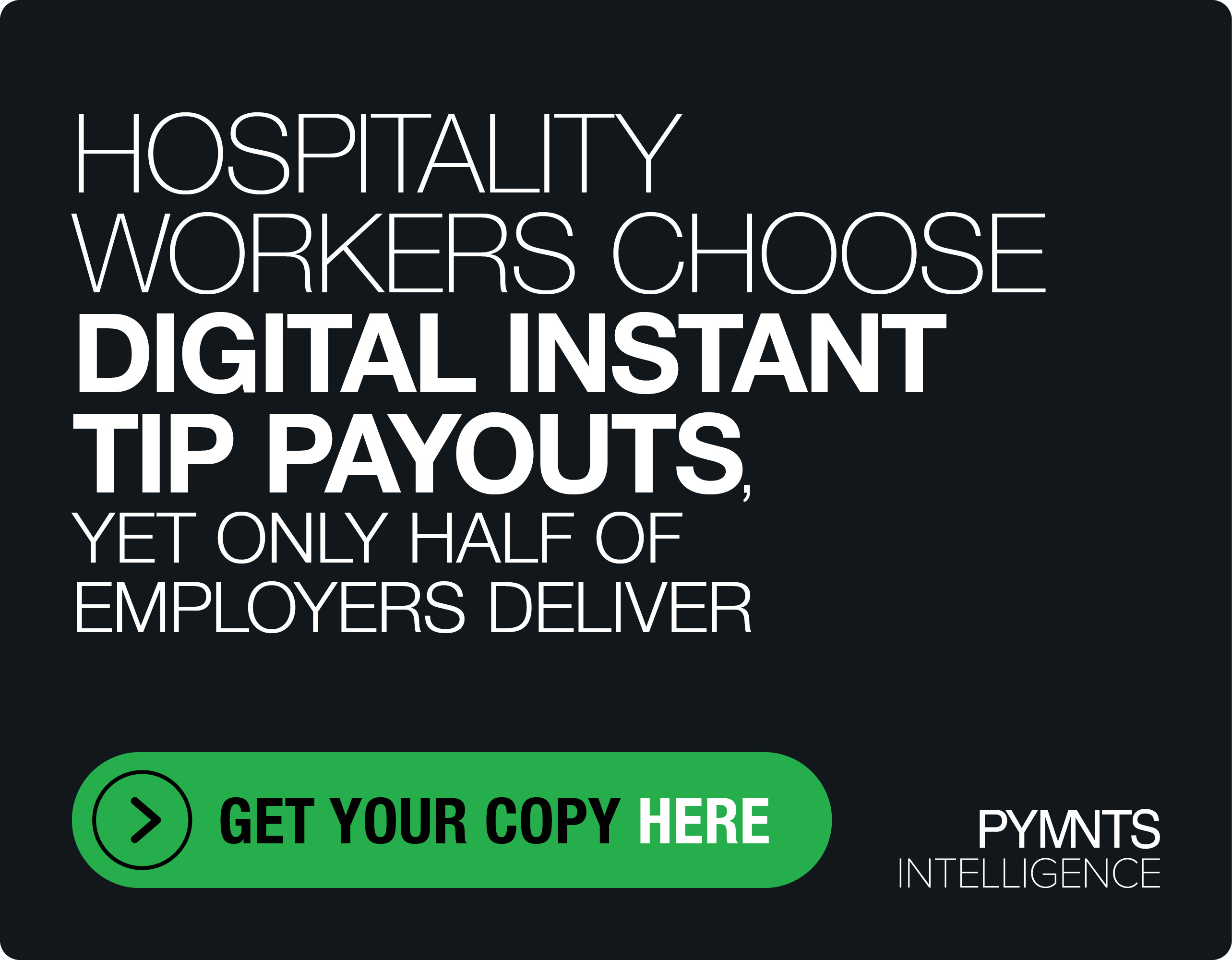Are Card Networks Tomorrow’s Ad Platforms?

Card-linked offers have been singularly unimpressive as a category. They’ve been around for years and raised a ton of capital, but have failed to turn the heads of merchants or consumers. MPD CEO Karen Webster says that two things could change that – mobile phones and the card networks. And, that the combination of the two could then end up giving the traditional ad networks a huge run for their money.
You’re all probably pretty familiar with the famous Aesop’s Fable about The Wolf in Sheep’s Clothing.
As the story goes, the shepherd and his dogs were doing such an outstanding job of protecting their flock that the wolf found it hard to nab one every now and then for dinner. One day, the wolf found a sheared sheep’s hide and used it to disguise himself as a sheep. The wolf in sheep’s clothing slid right into the shepherd’s flock, undetected, where he remained, picking off sheep to his heart’s content without anyone knowing he was the cause of the thinning flock. At least for a while.
The lesson learned: Keep your eyes peeled since you never know who might be hiding in plain sight waiting to eat you as lunch.
That’s a lesson that’s pretty relevant when assessing the payments field of play and trying to figure out who’s actually competing with whom – on any number of fronts.
To show you one example of what I mean, try your hand at this multiple choice test.
Q: Who on this list has the biggest potential to destroy the existing online advertising business model?
A: Yahoo
B: Bing
C: Facebook
D: Amazon
E: The Card Networks
A: Now because this article is on PYMNTS, you’ve probably figured out that the answer I am looking for is “E” – the card networks.
And you’d be right. But you might not entirely know why.
The card networks, and Visa and MasterCard in particular, are making (and have made) a series of investments to create offers and promotions ecosystems. These ecosystems make it possible for merchants with offers and consumers with network-branded cards to be connected, via issuers, through their relationships with card-linked offers platforms. Other innovators with data assets and mobile payments assets and technology enablers can all play along too, by connecting to the card networks, the merchant or issuers.
And mobile is now bringing it all to life.
Visa’s exclusive deal with edo Interactive and acquisition of TrialPay, and MasterCard’s purchase of Truaxis and its bid to acquire Applied Predictive Technologies, along with their APIs that expose those assets, are just a few examples of the tools and technologies they are leveraging to make it possible for such an ecosystem to exist and flourish.
If you’re a merchant, that probably sounds like it could be a pretty sweet thing to be a part of. In theory, this ecosystem gives merchants the means to efficiently target and convert a qualified buyer without having to organize it all themselves and without too much of an integration hassle. And since in order to receive an offer, a consumer has to opt-in, merchants get the chance to pitch their offers to a qualified buyer – or at least one that has a strong intention to buy from them. And see and be reminded of the existence of offers via their mobile devices.
Giving merchants an efficient way to distribute offers to, in theory, motivated buyers with the tools in hand to make them more accessible, and who also have the means and the tools to pay (a credit card), is what could ultimately mean a world of hurt for the traditional ad-based search engine businesses which are all about dishing up ads for products and offers, and hoping to get consumers to click.
I started thinking about this after speaking with the new CEO of edo, Souheil Badran, last week. Among other things, I was curious to ask him about his plans for edo since card-linked offers haven’t exactly set the world on fire. They’ve been around for a while, kind of slogging along. edo, in fact, Badran reminded me, has been in existence for seven years.
The results have seemed pretty unremarkable, I think, for a couple of reasons.
One, the offers themselves are pretty generic and often not even linked to purchase behavior. My Bank of America offers portfolio is about as unconnected to my spending patterns as it gets – mostly because for big purchases I use my credit card and what Bank of America sees via my online checking account and my debit card is pretty lackluster. That’s why most of the ads I get are for things I could care less about: car washes, fast food and oil changes.
But offers linked to the credit card platforms that get the bulk of my spending still miss the mark in my opinion, too. I’ve linked one of my cards to a few merchant offers – which I’ve done when prompted – and then I promptly forget that I did. That means that the act of linking my card to a merchant doesn’t drive my spending. Most of the time, the merchants I link my card to are merchants that are on my short list already. So, my opting-in hasn’t shifted my spending at that merchant – if anything it could even cost more for a merchant I already use and use often to serve me.
Then, and perhaps worst of all, the “surprise and delight” associated with redeeming my card-linked offer is missing. The first time that I’m reminded that I got a benefit from that merchant is when I view my statement, some days and weeks after my shopping experience happened. There is no virtuous circle created of me being reminded of the existence of a card-linked offer opportunity and any other trigger — location, past purchase history, new merchandise received at the merchant, and/or new experiences in the store — that might get me in there to spend in the first place and then a thank you and reminder to spend again the first chance I get.
But the more that Badran and I chatted about the card-linked offers space, its pitfalls to date, the potential for the future, and the impact of mobile on card-linked offers overall, it suddenly dawned on me that the mashing up card-linked offers’ platforms with the card networks has the potential to create an entirely new ecosystem that could turn the notion of ad platforms on its head.
And turn card networks into powerful competitors to everyone else who is hoping to make a living serving ads to consumers (and hoping that those who click on ads become customers).
Just incase you need more convincing.
First, the product discovery process has been massively disrupted.
The search for the products that consumers might like to buy doesn’t start via a search done on Google the way it once did. In fact, as I wrote a few weeks ago, more than half of consumers start somewhere else: favorite/known merchant sites, aggregator sites that drive traffic to merchant sites, social networks or marketplaces. Time-pressed consumers with mobile phones and access to the Internet on a variety of connected devices now have gobs of alternatives that allow them to avoid the looking-for-stuff-in-one-place-and-then-hopping-all-over-the-place-to-actually-make-the-purchase dance that used to typify the consumer’s path to purchase. That, of course, varies by what consumers are buying, but the numbers tell the story of how consumers have shifted their buying behaviors — all because they want to eliminate the friction associated with shopping and buying — and making sure that they get a good deal in the process.
Second, for consumers to care about card-linked offers – or any offer – they need to be good offers at the great merchants they care about and want to buy from.
And that’s all about scale and distribution. Thousands of issuers enabling billions of cardholders will attract lots of merchants with great offers who want to reach them. Lots of merchants with great offers will attract lots of consumers that will attract lots more merchants and merchant offers. The card-linked offers platforms are the intermediaries that link issuers with cardholders to merchants that want them. Card networks can make that happen for them at scale – and just keep the virtuous ecosystem circle alive and kicking.
Third, card-linked offers eliminate a few big headaches for merchants and cardholders and innovators.
Coupons, even the digital ones, become a quaint relic as everything simply gets pegged to the consumer’s card account. Consumers don’t have to remember to clip coupons – or save them. Merchants don’t need to worry about the pain and agony of redemption. Cards (or accounts), in essence, become the enabling platform for offers and promotions and how they are redeemed — full stop — saving everyone time and money while adding a ton of value to the consumer.
Fourth, and perhaps most compelling, is the potential to increase conversions – and merchant sales.
People who know this stuff say that Ad Sense conversion rates range from ~2 percent on the low end to ~5.6 percent on the high end. But that’s just conversion defined by clicking on an ad. The percent of consumers who then go on to buy is a fraction of that fraction. Card-linked offers platforms today say they have the ability to deliver relevant offers based on purchase history and current purchase patterns in real-time. And, match merchants and offers to consumer profiles and even message consumers when an offer has been redeemed to engage them and create the virtuous circle that can incent future behavior. And have the heft to get merchants to craft unique offers that match consumers with specific tastes and behaviors with offers that will not only get more to opt-in in the first place, but convert later on.
And, therefore, make it way more attractive for merchants to shift their time, money and attention away from traditional ad platforms to those that are more connected to consumer preferences, not to mention what they’ve actually done.
The reality, however, is a bit distant from the picture that I just painted.
But stepping back and looking at the puzzle pieces that have been assembled by two of the most powerful players in payments – Visa and MasterCard – suggests that what’s to come might not be too far off – or away.
It appears that what’s taking shape is the development of a rich and robust ecosystem of card-linked platforms, offers, and innovators that they enable, enrich and scale.
So, don’t be too surprised when one day the existing online ad networks wake up to find that some of their most valuable flock of advertisers and brands have been led away by another network. That’s a network disguised as payments but is in reality a more robust, relevant and ROI-rich sales network for merchants.
If, that is, they can deliver a proposition that gets enough consumers to opt-in in the first place and then motivates them to use it as part of their ongoing shopping and buying experience. Otherwise they just become another thing that merchants have to support without any incremental upside.
